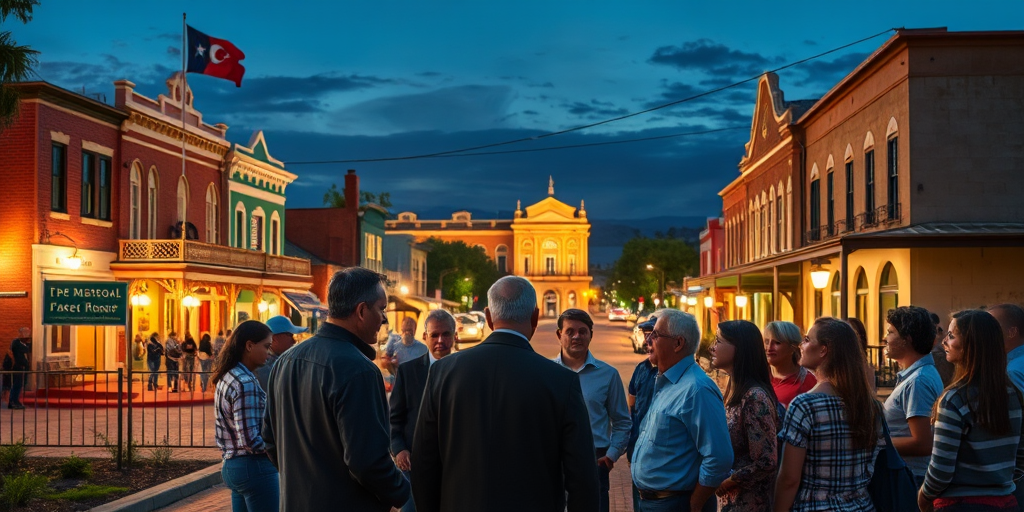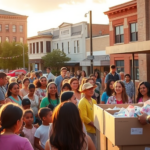Mission and School District Innovate with Land Swap for Flood Prevention
In a strategic move that promises to address pressing flood concerns while optimizing local resources, the city of Mission has engaged in a groundbreaking land swap agreement with the local school district. This proactive measure is set to enhance flood mitigation efforts in the Rio Grande Valley (RGV) by integrating community resources and addressing longstanding infrastructure challenges.
Collaborative Strategy: A New Approach to Stormwater Management
Mission city officials, alongside the Mission Consolidated Independent School District (CISD), have orchestrated a land swap that marks a forward-thinking approach to flood prevention. By trading lands instead of purchasing new properties, the city plans to construct retention ponds on school-donated sites, aimed at temporarily containing stormwater during heavy rains. This initiative not only respects budget constraints but also aligns with the shared goals of city planning and educational resource management.
Mayor Norie Gonzalez of Mission articulated the dual benefits of this initiative: “With this partnership, we’re not only bolstering our flood defenses but also enhancing the safety and accessibility of our schools. Flooded streets can halt education when kids can’t get to school, so this is truly a win-win for our community.”
The Nuts and Bolts of the Land Swap
Under this agreement, the school district will provide land near Castro Elementary School and within Bryan Elementary’s athletic field for the development of retention ponds. These structures will temporarily hold floodwaters and prevent the main drainage system from becoming overwhelmed during peak rainfall. In return, the city will allocate its land near Bryan Elementary for school use, addressing overflow parking needs—a solution that underscores thoughtful land use planning.
Gonzalez explained the practical benefits: “The cost is going to be minimal because much of the project will be managed in-house. Our public services team is well-equipped to handle this, making it economical and efficient.”
Local Impact: Enhancing Resilience in the Valley
For Valley residents, particularly in flood-prone regions of Mission, this initiative is a significant step toward sustainable urban planning. With frequent heavy rains and intermittent flooding impacting daily life, this project aims to reduce such disruptions and improve quality of life. Importantly, by circumventing costly land purchases, both the city and school district can allocate funds to where they’re most needed—ongoing educational and infrastructural investments.
Jay Mendoza, a civil engineer familiar with the project, remarked on the broader implications for South Texas: “We’re seeing how local governments can creatively solve problems. Through resourceful methods like this land swap, other regions facing similar challenges might find viable paths to mitigate floods without excessive spending.”
Connections to Past and Future Developments
This innovative approach ties into ongoing efforts across the RGV to address stormwater management and infrastructure resilience. Recently, the city of Alton announced an $8 million drainage initiative to combat stagnant water issues, highlighting a regional trend in addressing environmental concerns. Moreover, these developments resonate with legislative movements like the Texas Senate bill enabling colleges to financially compensate athletes, reflecting a broader zeitgeist of modernizing existing systems to better serve community needs.
Nyomi Gutierrez, a local resident and schoolteacher, expressed optimism about the initiative: “Seeing both our city and schools work together is truly encouraging. It’s a reminder that even though we’re tackling complex issues, collective efforts can lead to sustainable solutions.”
Looking Forward: Challenges and Opportunities
While the land swap offers a promising blueprint for flood control, executing the project will require ongoing collaboration and clear communication with stakeholders. Ensuring the safe integration of retention ponds within school environments also remains a priority, as collective safety underlies the project’s core values.
Moreover, community engagement throughout the process will be vital. By involving Valley residents, not only can authorities ensure that solutions are tailored to local needs, but they can also foster public trust and participation, critical components for enduring success.
Resources for Community Engagement
To keep residents informed and engaged, Mission city officials and the Mission CISD are planning a series of community meetings and updates. Residents are encouraged to participate and share feedback, enhancing transparency and accountability as the project progresses.
As this initiative unfolds, it highlights how innovative, cooperative approaches can effectively tackle the unique challenges faced by the RGV. By focusing on sustainable and community-centric solutions, Mission is reinforcing its commitment to protecting citizens and enhancing the region’s resilience for future generations.







